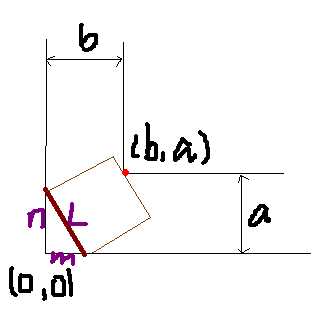标签:距离 www stdout es2017 三分法 范围 单词 数据规模 大括号
a
【问题描述】
你是能看到第一题的 friends 呢。
——hja
给你一个只有小括号和中括号和大括号的括号序列,问该序列是否合法。
【输入格式】
一行一个括号序列。
【输出格式】
如果合法,输出 OK,否则输出 Wrong。
【样例输入】
[(])
【样例输出】
Wrong
【数据范围与规定】
对于70%的数据,1 ≤n≤ 100。
对于100%的数据,1 ≤ n≤ 10000,所有单词由大写字母组成。
P100 zhxb
思路:栈维护一下。

#include<cstdio> #include<cstring> #include<iostream> using namespace std; string s; char stack[10100]; int top,m1,m2,m3; int main(){ freopen("a.in","r",stdin); freopen("a.out","w",stdout); cin>>s; int len=s.length(); for(int i=0;i<len;i++){ if(s[i]==‘(‘) {m1++;stack[top++]=s[i];} if(s[i]==‘[‘) {m2++;stack[top++]=s[i];} if(s[i]==‘{‘) {m3++;stack[top++]=s[i];} else if(s[i]==‘)‘){ if(!m1){cout<<"Wrong";return 0;} else if(stack[top-1]!=‘(‘){cout<<"Wrong";return 0;} else{top--;m1--;} } else if(s[i]==‘]‘){ if(!m2){cout<<"Wrong";return 0;} else if(stack[top-1]!=‘[‘){cout<<"Wrong";return 0;} else {top--;m2--;} } else if(s[i]==‘}‘){ if(!m3){cout<<"Wrong";return 0;} else if(stack[top-1]!=‘{‘){cout<<"Wrong";return 0;} else {top--;m3--;} } } if(top||m1||m2||m3) cout<<"Wrong"; else cout<<"OK"; }
b
【问题描述】
你是能看到第二题的 friends 呢。
——laekov
Yjq 想要将一个长为l宽为w的矩形棺材(棺材表面绝对光滑,所以棺材可
以任意的滑动)拖过一个 L 型墓道。
如图所示,L 型墓道两个走廊的宽度分别是a和b,呈 90°,并且走廊的长
度远大于?。
现在 Hja 想知道对于给定的a,b,l,最大的?是多少,如果无论如何棺材都
不可能通过,则输出"My poor head =("
【输入格式】
第一行三个用空格分隔的整数a,b,l,意义如题目所示。
【输出格式】
输出最大的可能的?,保留七位小数,如果无论如何棺材都不可能通过,则
输出"My poor head =("。
【样例输入 1】
2 2 1
【样例输出 1】
1.0000000
【样例输入 2】
2 2 2
【样例输出 2】
2.0000000
【样例输入 3】
2 2 3
【样例输出 3】
1.3284271
【样例输入 4】
2 2 6
【样例输出 4】
My poor head =(
【数据范围与规定】
对于100%的数据,1 ≤ a,b,l ≤ 10 4 。
P100 zhxc
以下解题思路来自xxy大佬的博客。

设直线解析式为 y=(-n/m)* x+n
整理,得:- n * x + m * y + n * m = 0
点(b,a)到直线的距离为:| - b * n - a * m + n * m | / L
(L : 根号下(n^2 + m^2)=L)
最优解就是 - b * n - a * m + n * m 的最大值
然后不知道为啥求了个
b * n + a * m - n *m 的最小值
单峰函数求最小值,三分法每次去掉大的一部分
式子最小值<0 时无解

#include<cmath> #include<cstdio> #include<cstring> #include<iostream> #include<algorithm> using namespace std; const double eps=1e-9; int a,b,l; double L=0,R=1; double ans=0x7f7f7f7f; double mid1,mid2,t1,t2; double f(double n){ double m=sqrt(1.0*l*l-n-n); if(n*m>a*n+b*m) return -1; return (b*m+a*n-n*m)/l; } int main(){ freopen("b.in","r",stdin); freopen("b.out","w",stdout); scanf("%d%d%d",&a,&b,&l); if(a>=1&&b>=1){ printf("%d.0000000",l); return 0; } if(a>=l){ printf("%d.0000000",b); return 0; } if(b>=1){ printf("%d.0000000",a); return 0; } int t=100; while(t--){ mid1=(R-L)/3+L; mid2=L+R-mid1; t1=f(mid1); t2=f(mid2); if(t1<0||t2<0){ printf("My poor head =("); return 0; } if(t1<t2){ ans=min(ans,t1); R=mid2; } else{ ans=min(ans,t2); L=mid1; } } printf("%.7lf",ans); }
c
【问题描述】
你是能看到第三题的 friends 呢。
——aoao
树是个好东西,删掉树一条边要 1 的代价,随便再加一条边有 1 的代价,求
最小的代价把树变成环。
【输入格式】
第一行一个整数n,代表树的点数。
接下来n − 1行,每行两个数代表树的一条边。
【输出格式】
一行一个整数代表答案。
【样例输入】
4
1 2
2 3
2 4
【样例输出】
3
【数据规模与约定】
对于30%的数据,1≤n≤10。
对于60%的数据,1 ≤ n ≤ 1000。
对于100%的数据,1 ≤ n ≤ 100000。
思路:贪心。

#include<cstdio> #include<cstring> #include<iostream> #include<algorithm> #define MAXN 100010 using namespace std; int n,tot,ans,root; int into[MAXN]; int to[MAXN*2],net[MAXN*2],head[MAXN*2]; void add(int u,int v){ to[++tot]=v;net[tot]=head[u];head[u]=tot; to[++tot]=u;net[tot]=head[v];head[v]=tot; } void dfs(int now,int fa){ for(int i=head[now];i;i=net[i]) if(to[i]!=fa){ dfs(to[i],now); if(into[to[i]]>2){ into[now]--; ans+=(into[to[i]]-2)*2; } } } int main(){ freopen("c.in","r",stdin); freopen("c.out","w",stdout); scanf("%d",&n); for(int i=1;i<n;i++){ int u,v; scanf("%d%d",&u,&v); add(u,v); into[u]++; into[v]++; } root=1; for(int i=1;i<=n;i++) if(into[i]==1){ root=i; break; } dfs(root,-1); cout<<ans+1; } /* 8 1 2 1 3 3 4 3 5 4 6 4 7 4 8 3 */
标签:距离 www stdout es2017 三分法 范围 单词 数据规模 大括号
原文地址:http://www.cnblogs.com/cangT-Tlan/p/7642522.html